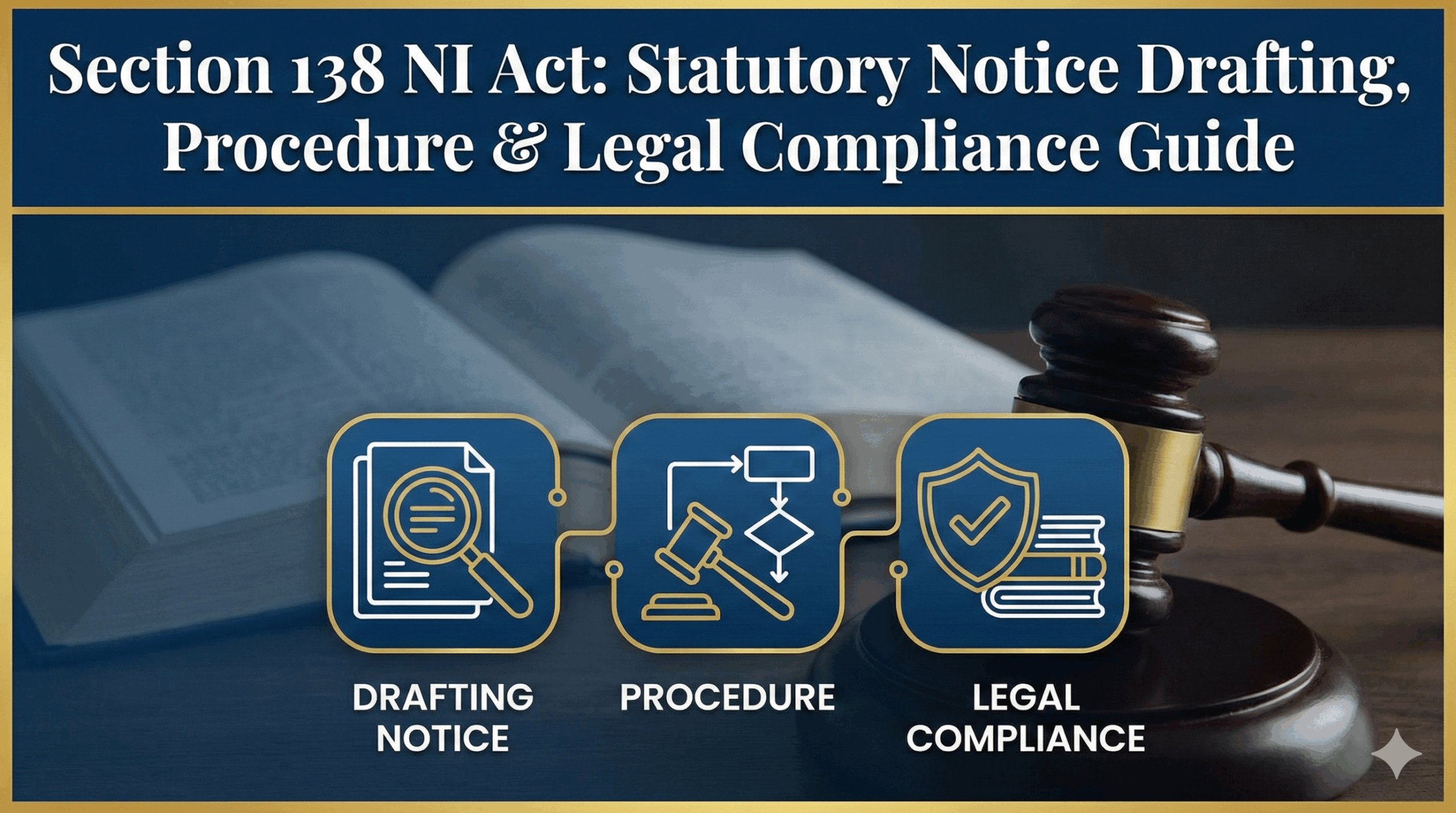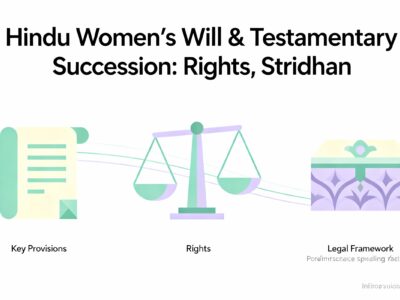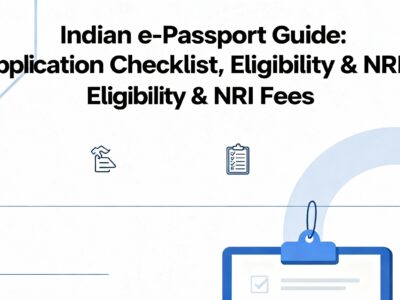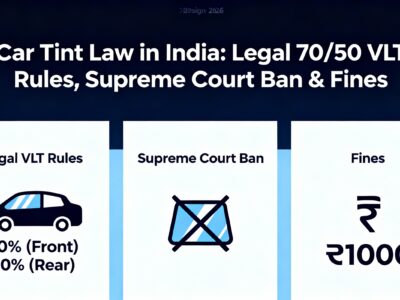While Indian law provides strong protection for women, many ask: can a husband file a domestic violence case? The answer is complex. If you are a man facing domestic abuse, you have specific legal rights under the Indian Penal Code (IPC) and divorce laws. This comprehensive guide explains your legal options, the step-by-step procedure for filing a case, and the crucial evidence needed to protect yourself and seek justice.
A Husband's Guide to Legal Action Against Domestic Violence in India
Navigating the complex legal landscape when men become victims of domestic abuse.
The narrative around domestic violence in India has rightly focused on protecting women, leading to powerful laws like the PWDVA, 2005. However, a critical question is emerging from the shadows: what legal recourse does a husband have when he is the victim of abuse? This guide provides a comprehensive analysis of the legal avenues available to men facing domestic violence in India.
Can a Husband File a Case Under the Domestic Violence Act (PWDVA), 2005?
No. The Law is Clear.
Section 2(a) of the PWDVA defines an "aggrieved person" as "any woman". This explicitly restricts the Act's protection to female victims. While a woman can file a case against another woman (e.g., her mother-in-law), a man cannot initiate a case as a complainant under this specific law.
The Legal Reasoning: Why the Door is Closed
The restriction is not an oversight but a core feature of the PWDVA's legislative design. The Supreme Court's landmark judgment in Hiral P. Harsora v. Kusum Narottamdas Harsora (2016) further clarifies this. In this case, the court struck down the words "adult male" from the definition of a "respondent," making it possible for a woman to file a case against any person, male or female, who perpetrates violence against her.
Crucially, this ruling expanded the scope of accountability for the protection of women; it did not make the law gender-neutral for complainants. The court's intent was to ensure an aggrieved woman could seek protection from any abuser in her domestic circle, reinforcing the Act's women-centric nature.
Criminal Recourse: Using the Indian Penal Code (IPC)
While the PWDVA is not an option, the Indian Penal Code, 1860, is gender-neutral for most offences. It serves as the primary tool for a husband to seek criminal action against an abusive wife. Acts of physical violence, threats, and property damage can be prosecuted under various IPC sections.
A Toolkit for Prosecution: Applicable IPC Sections
Below is a quick reference to key IPC provisions. Use the filters to sort by the nature of the offence.
| IPC Section | Offence | Punishment | Details |
|---|---|---|---|
| 323 | Voluntarily Causing Hurt (e.g., slapping, pushing) | Up to 1 year, or ₹1,000 fine, or both. | Non-Cognizable Bailable Compoundable |
| 325 | Voluntarily Causing Grievous Hurt (e.g., fracture) | Up to 7 years + Fine. | Cognizable Bailable Compoundable |
| 324 | Hurt by Dangerous Weapon | Up to 3 years, or fine, or both. | Cognizable Non-Bailable Non-Compoundable |
| 506 | Criminal Intimidation (Threats to person/property) | Up to 2 years, or fine, or both. | Non-Cognizable Bailable Compoundable |
| 504 | Intentional Insult to Provoke | Up to 2 years, or fine, or both. | Non-Cognizable Bailable Compoundable |
| 427 | Mischief / Property Damage (over ₹50) | Up to 2 years, or fine, or both. | Non-Cognizable Bailable Compoundable |
The Counter-Narrative: Section 498A and Its Misuse
It's impossible to discuss matrimonial law without addressing Section 498A of the IPC, which criminalizes cruelty by a husband or his relatives. The Supreme Court has often termed its misuse as "legal terrorism," acknowledging that it's frequently used to harass husbands and their families. This has led to crucial safeguards, like the guidelines in the Arnesh Kumar vs. State of Bihar case, which prevent automatic arrests under 498A and mandate a preliminary inquiry by police. This context is vital, as a husband's genuine complaint can sometimes be viewed with skepticism by law enforcement as a "counter-blast" to a potential 498A case.
Civil Remedies: Divorce on Grounds of 'Cruelty'
The most definitive civil remedy is dissolving the marriage. Under Section 13(1)(ia) of the Hindu Marriage Act, 1955, both husband and wife can seek divorce on the grounds of cruelty. The courts have interpreted 'cruelty' broadly, including both physical and mental abuse.
What Constitutes 'Cruelty' in the Eyes of the Law?
The conduct must be "grave and weighty," making it impossible to continue the marital relationship. The courts have recognized several acts as mental cruelty:
- Filing False Criminal Cases: Repeatedly held by the Supreme Court as a profound act of mental cruelty, especially false 498A or dowry cases.
- Defamatory Allegations: Baseless accusations of adultery, impotence, or mental illness.
- Verbal & Emotional Abuse: A sustained pattern of insults, humiliation, and threats.
- Threats of Suicide: Used as a tool for emotional blackmail and causing mental anguish.
- Financial Misconduct: Damaging a husband's career or financial standing through malicious acts.
The Fragmented Legal Path for Men
Unlike the integrated PWDVA for women, a man must navigate multiple legal systems for relief.
Strategic Decision-Making: Which Path to Take?
The legal options can be overwhelming. This interactive decision tree can help you clarify your primary objective and identify the most suitable legal strategy for your situation.
What is your most immediate priority right now?
The Procedural Framework: How to Initiate Action
Knowing the correct procedure is critical to overcoming institutional hesitation. The process involves interacting with both the police and the judiciary.
Flowchart: When Police Don't Register an FIR
File Complaint at Police Station
Submit a detailed written complaint to the local Station House Officer (SHO).
Escalate to Senior Police
If FIR is not registered, send the complaint by post to the Superintendent of Police (SP) under Sec 154(3) CrPC.
File a Private Complaint in Court
Directly approach the Magistrate's court under Sec 200 CrPC. The court can order the police to file an FIR.
The Foundation: Proving Your Case in Court
Evidence is key, especially when abuse happens behind closed doors. A strong case is built on a foundation of meticulous documentation.
The Evidence Pyramid
Medical & Official Records
Medico-Legal Certificate (MLC), X-rays, Certified copies of false complaints.
Direct Evidence
Photos/videos of injuries, audio/video recordings of threats (with Sec 65B certificate).
Corroborative Evidence
Witness testimony from family, friends, neighbors who saw the aftermath or pattern of abuse.
Your Testimony
A consistent, detailed personal account tying all evidence together.
The Evolving Judicial Mindset
The judiciary has shown an increasing awareness of the complexities of matrimonial disputes, including the reality of male victimhood. A review of key judgments reveals a perceptible shift towards a more balanced application of justice.
High Court Rulings on Male Victimhood
- Delhi High Court (Jan 2025): In a landmark ruling, the court asserted that "Men Too Are Entitled To Same Protection From Cruelty And Violence As Women," stressing the need for a gender-neutral approach in cases of extreme violence.
- Kerala High Court (Dec 2022): The court issued a cautionary note to lower courts about the "common practice to convert some other dispute into a domestic violence complaint," urging scrutiny to prevent misuse.
The Power to Quash Frivolous Proceedings
The High Courts are vested with inherent power under Section 482 of the CrPC to quash criminal proceedings to prevent the abuse of the process of law. This serves as a vital remedy for husbands and their families who are embroiled in baseless or malicious litigation, including misused PWDVA cases.
Support Systems & Strategic Recommendations
While the state machinery lacks formal support systems for male victims, several non-governmental organizations (NGOs) have emerged to fill this critical gap, offering counselling, legal guidance, and a community of support.
Key Resources for Men
- Men Welfare Trust (MWT): A prominent Delhi-based NGO focusing on the misuse of gender-biased laws.
- Save Indian Family (SIF): A large network of over 50 NGOs across India working to protect the rights of men and families.
- SIF ONE Helpline (8882 498 498): A national, 24/7 helpline for men in distress, providing confidential counselling.
Strategic Steps for Male Victims
- Prioritize Safety: Your physical and mental well-being comes first.
- Document Everything: Keep a detailed log of all incidents.
- Preserve Evidence: Safeguard all medical, digital, and physical proof.
- Seek Experienced Counsel: Hire a lawyer with expertise in both criminal and family law.
- Consider Anticipatory Bail: If you fear a false counter-case (like 498A), filing for anticipatory bail under Section 438 CrPC is a crucial defensive move.
Conclusion: An Evolving Legal Landscape
The legal path for a husband facing domestic violence is undeniably complex and fragmented. However, the judiciary is increasingly recognizing the reality of male victimhood and the misuse of protective laws. This slow but steady evolution towards a more balanced application of justice offers hope that violence, regardless of the victim's gender, will be treated with the seriousness it deserves.









